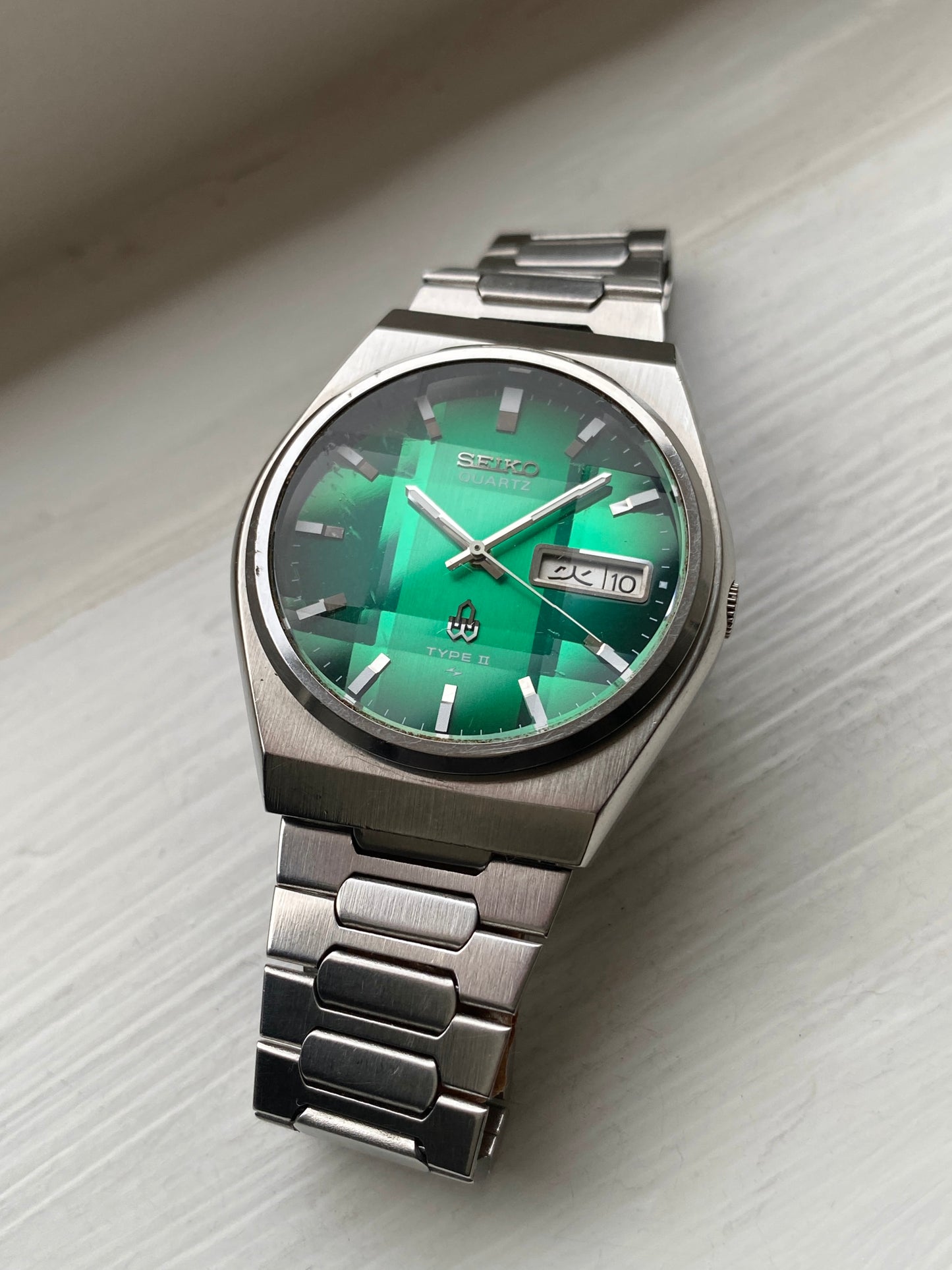Seiko Type II 7123-8020
Seiko Type II 7123-8020
Couldn't load pickup availability
|
Brand |
Seiko |
|
Model |
Type II |
|
Reference |
7123-8020 |
|
Year |
1978 - August |
|
Movement |
Quartz |
|
Extras |
Faceted crystal |
|
Dial |
Green |
|
Jewels |
2 |
|
Case |
36mm |
|
Lugs |
18mm |
|
Day/date |
Day and date |
|
Crystal |
Mineral |
|
Bracelet |
XBA820 | Fits up to a 19 cm wrist |
|
Performance |
± 15 second per month |
|
Box/papers |
Not included |
|
Condition |
Very good |
The watch
The 70s were a bold era for watch design, and Seiko often led the charge with daring models like the Vanac and Advan. Occasionally, Seiko also explored more accessible designs without losing flair. The Type II is a perfect example.
This Type II from 1978 features a stainless steel case with a simple yet comfortable bracelet and a striking bright green dial protected by a distinctive faceted crystal. The watch offers a day display in both Japanese Kanji and English.
The case and bracelet remain in very good condition, showing only minor signs of wear. The faceted crystal has a few tiny scratches on the left side, as well as the bezel. An extension piece is installed on the bracelet, which can be removed easily if not needed. This is a rare and vibrant piece that captures the adventurous spirit of Seiko’s 1970s lineup.
The quartz crisis
The "quartz crisis" was a major turning point in the watch industry during the 1970s and 1980s, driven by the rise of quartz technology. Companies like Seiko led the way, offering watches that were more accurate, more affordable, and easier to maintain than traditional mechanical models.
With the launch of the first quartz wristwatch, the Astron, in 1969, Seiko showed the world what quartz could achieve. Swiss watchmakers, known for their mechanical craftsmanship, were slow to react and lost much of their market share. The crisis forced the Swiss industry to restructure and helped shape a future where traditional watchmaking and modern quartz innovation could exist side by side.


























